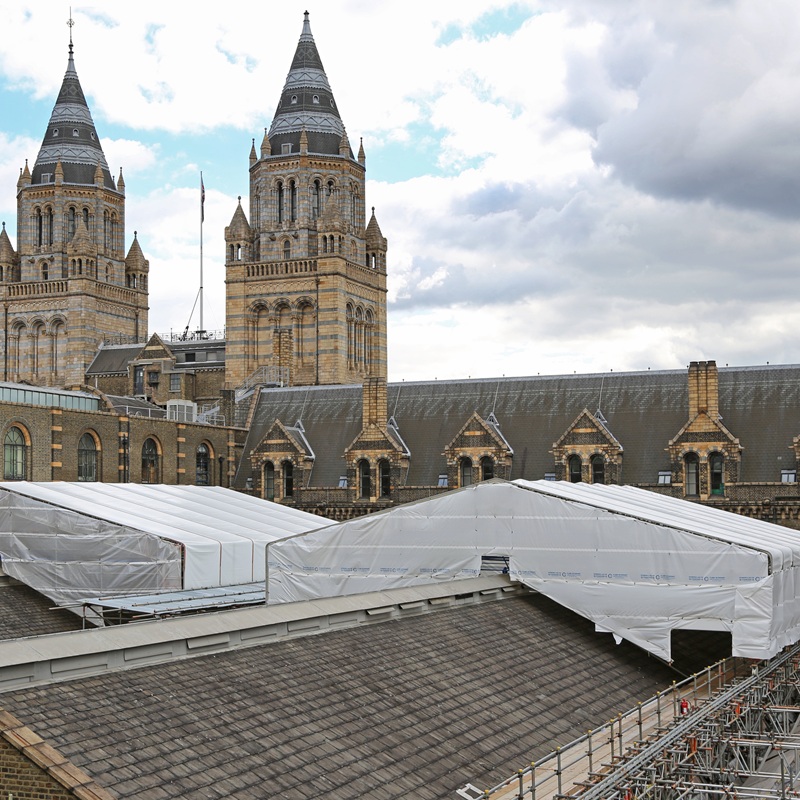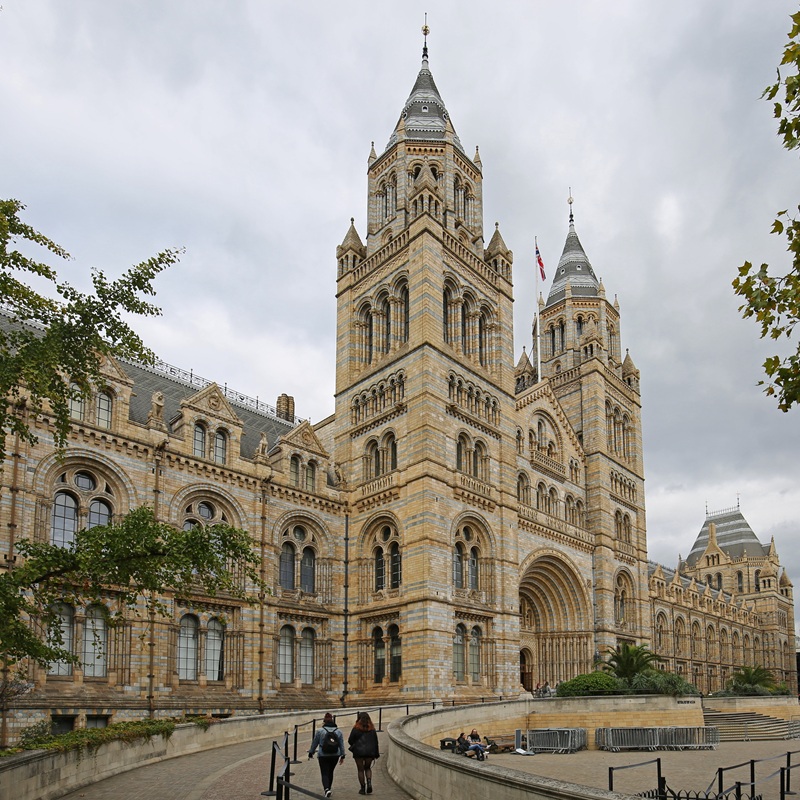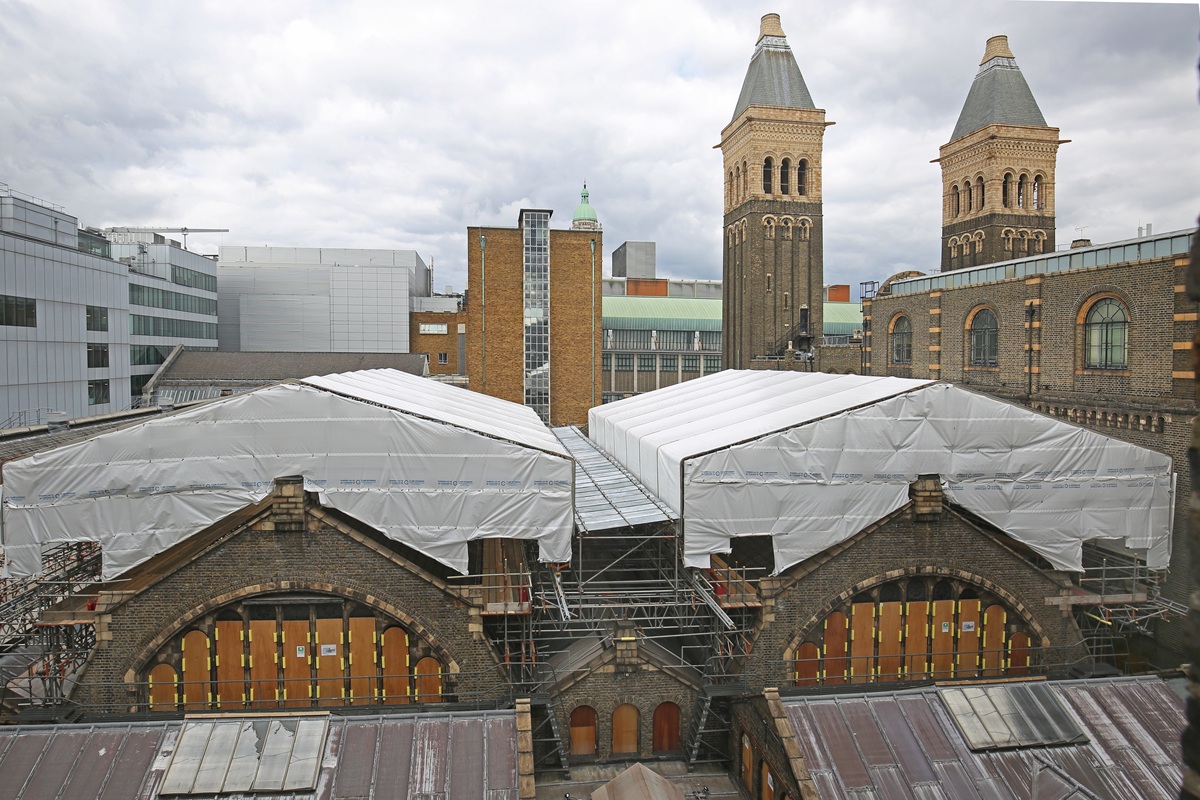
The iconic Natural History Museum is located in central London and considered to be one of the greatest Victorian museums of the 19th century.
Often referred to as a ‘Cathedral To Nature’, the museum remains a highly popular tourist attraction to this day, with around 80 million life and earth science specimens contained within five main collections.
As a Grade 1 listed building with so much ornate architecture and history behind it, any refurbishment work must be carried out with the utmost care and attention.
When repairs were needed to the roof of the Mammals Gallery in 2022, our experts were engaged at the pre-tender stage to provide a conceptual scaffold design for our client. Alltasks concept design significantly improved on the scaffolding proposals contained within the customers tender specification.
Once our client, DBR Ltd, was accepted for the project, we worked alongside them and the Natural History Museum’s in-house designers to create a mobile temporary roof enclosure for roof repair works .
The scaffold structure needed to be as light as possible, due to the limitations of the existing structure’s ability to support certain loads.
For cost-effectiveness, it was decided that the temporary roof would be mobile and long enough to cover one-third of the existing roof structure. The temporary roof would then be rolled into place to cover the remaining two-thirds later in the project.
Our team of experts used the Hakitek 750 rolling roof system and Novel ScaffPutLoad brackets to take bearing from the existing masonry wall and transfer the load to the ground. This was necessary because the scaffold was “landlocked” on one elevation.
The bearing of the historical masonry lime mortar walls was limited to 0.8N/mm2, therefore scaffold beam spacings and the number of ScaffPutLoad brackets were increased to stay within permissible limits.
Internal support towers were also founded on steel UB spreaders to ensure the existing gallery floor was not overloaded and the use of the gallery could be maintained.

All scaffolding operations had to fit around the day to day running of the museum and this meant our team had to work with limited access and take out of hours deliveries. However, the end result of the project was well worth the added effort.

The use of our Haki system saved time on the installation and our flexible workforce was able to cope with day and night shifts with frequent programme changes.
